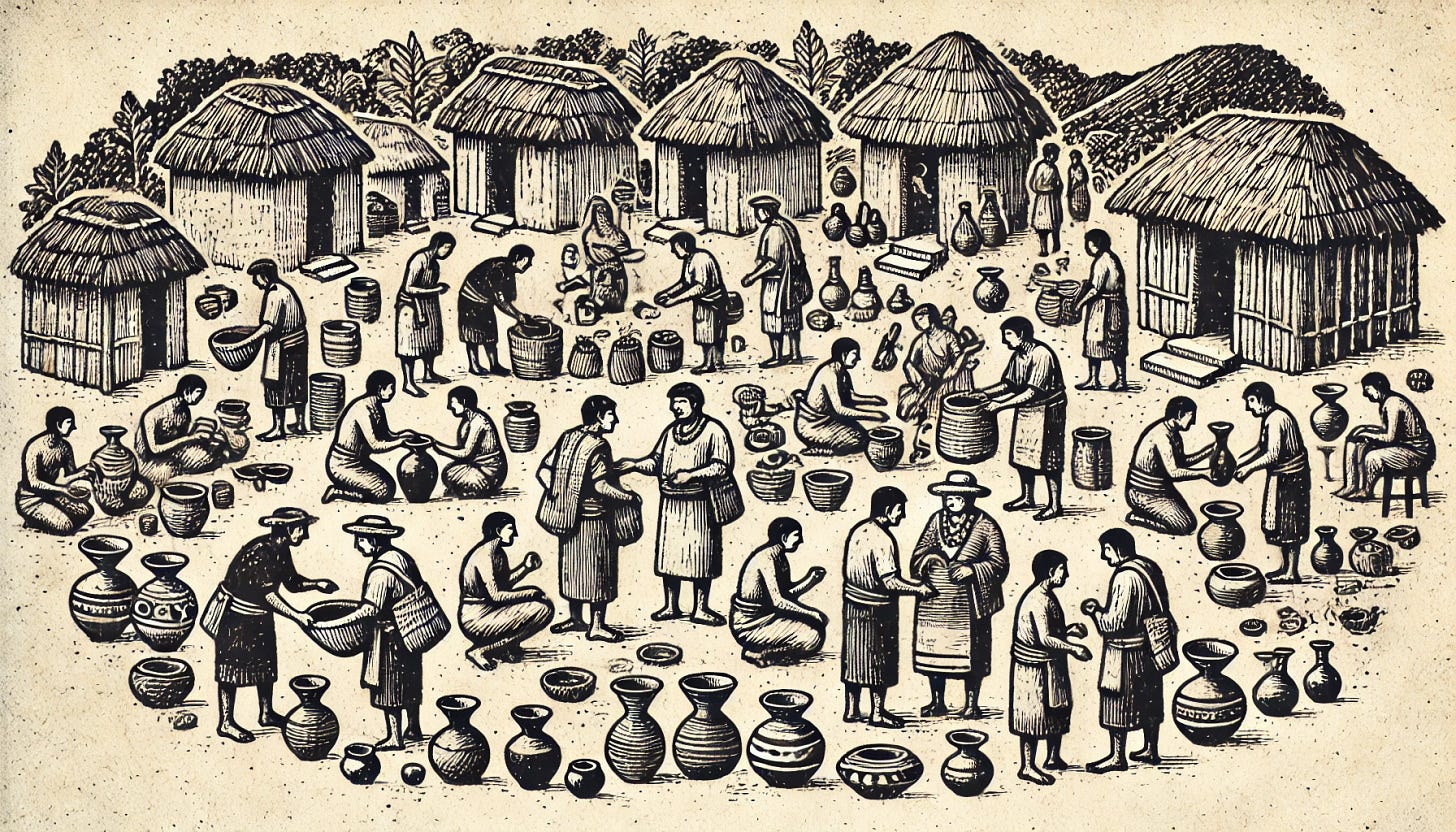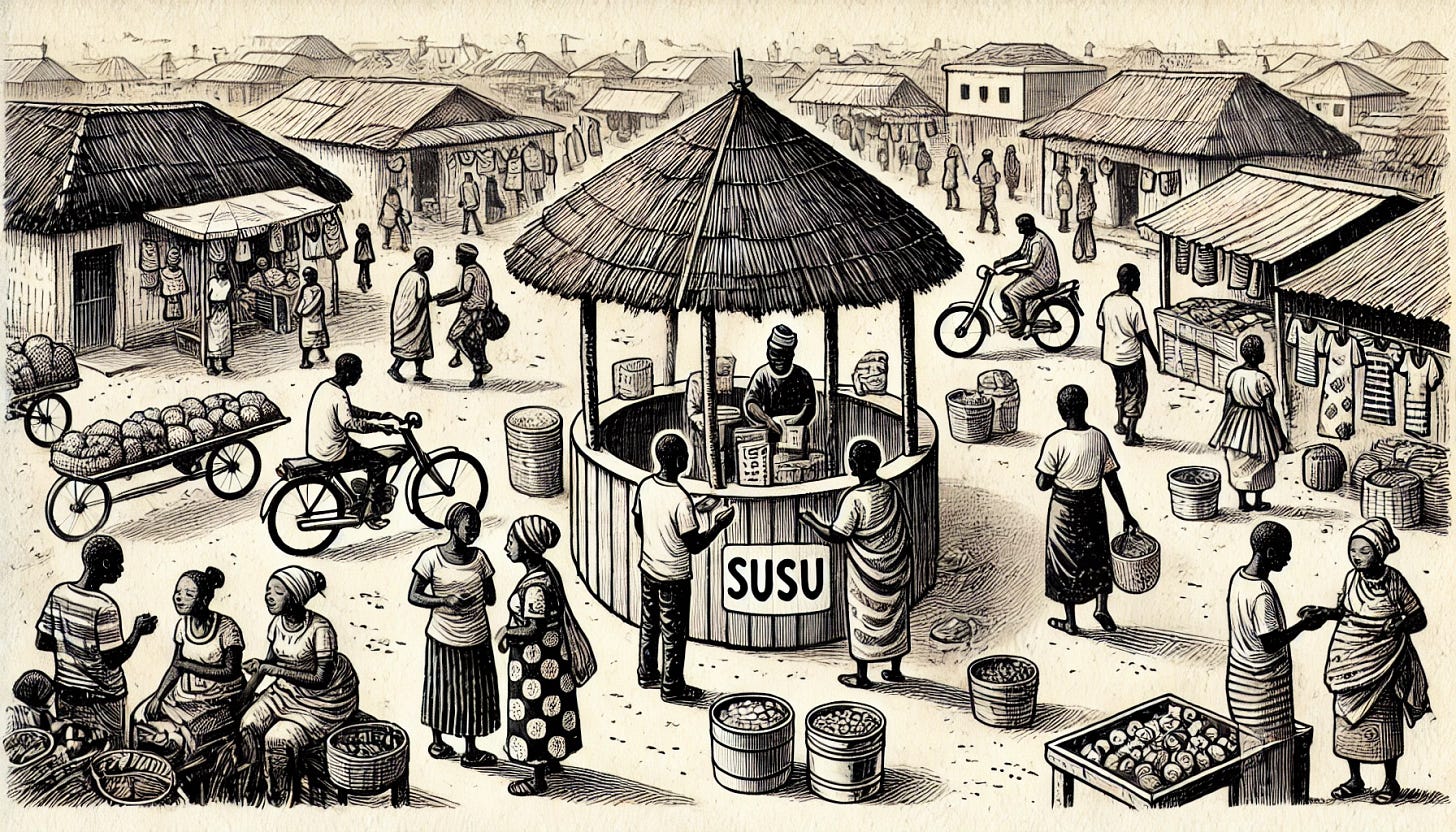What we can learn from cultures that don't have credit
No credit? No problem. Around the world, some cultures maintain financial stability and independence without conventional, Western-style credit and debt systems.
Debt is an increasingly heavy burden for many American households, with total household debt now hitting an eye-popping $17.987 trillion. This massive figure includes all sorts of debt — mortgages, auto loans, credit cards, and student loans.
Right now, the average American household owes around $104,215, which is the highest rate the country has ever seen. Mortgage debt has jumped significantly, reaching $12.44 trillion by the first quarter of this year. Auto loans are climbing too, with balances at $1.62 trillion, and credit cards aren’t far behind at $1.12 trillion.
While Americans wrestle with how to manage rising debt, it's interesting to note that there are cultures and communities around the world who have found ways to manage or sidestep the relentless cycle of credit and debt altogether. These systems provide valuable insights into financial independence, community support, and sustainable living — offering a potential guide for those looking to break free from the debt trap.
The Amish: simple living and no debt
America’s Amish communities are a compelling example of financial independence garnered through hard work, simplicity, and self-reliance. Known for rejecting modern technology and conveniences, the Amish maintain a lifestyle deeply rooted in traditional values and community cooperation. Their economic mindset is guided by a philosophy that prioritizes living within one’s means and avoiding the entanglements of debt.
The Amish largely operate outside the mainstream financial system. They generally choose cash over credit for their transactions, except when making large purchases like a farm. Their cash-based approach helps them avoid the pitfalls associated with credit cards and loans and instead of borrowing money from banks, they rely on personal savings and the collective support of their community.
When an Amish family faces financial hardship, the community often steps in to offer financial loans or to help rebuild a barn or home. This communal safety net replaces the need for rapacious insurance companies and bank loans.
Self-sufficiency is another cornerstone of Amish life. Most Amish families are involved in farming, craftsmanship, or small businesses that cater to local needs. By focusing on the needs of local economies and rejecting mass consumerism, they minimize their exposure to market fluctuations and economic downturns. Their lifestyle underscores a fundamental truth: financial independence is closely linked to reducing external dependencies and cultivating a self-reliant community.
Bartering systems in indigenous communities
Indigenous communities around the world have long relied on bartering to sustain their economies, directly trading goods and services without the use of money or credit. This system places intrinsic value on tangible goods and skills rather than abstract monetary measures, which can be prone to inflation and instability. In these communities, relationships and reciprocity are at the heart of economic exchanges, strengthening social bonds and ensuring that everyone’s needs are met.
In northern Ecuador, for example, a traditional bartering system known as trueque allows communities to exchange goods, services, and knowledge without the need for money. Rooted in ancient Andean cultural practices, trueque emphasizes economic solidarity and operates on principles such as reciprocity, complementarity, and redistribution. Rather than focusing on monetary value, exchanges are driven by prevailing needs.
For example, a farmer might trade surplus crops for handmade tools, or a craftsman might exchange his wares for essential services like medical care or childcare. This approach not only sustains the community but also reduces the individual financial pressures that come with cash-based economies.
The minimalist approach embedded in barter systems reminds us of the importance of prioritizing what truly matters and avoiding the trappings of consumer culture.
Embracing minimalism in Japan’s frugal subcultures
Subcultures such as the Danshari and Minimalist movements have emerged in Japan as powerful counterpoints to the pressures of consumerism and debt. Danshari, which translates to “refuse, dispose, separate,” is a lifestyle philosophy that encourages individuals to declutter their lives, both physically and mentally. By refusing unnecessary purchases, disposing of excess possessions, and separating from materialism, practitioners of Danshari embrace a simpler, more mindful approach to living.
The financial implications of this philosophy are profound. By prioritizing only what is necessary and valuable, Danshari followers reduce their spending, increase their savings, and ultimately steer clear of the debt that accompanies impulsive buying and the desire for more. This mindful consumption is coupled with a commitment to living within one’s means, where saving takes precedence over spending.
Many minimalists in Japan also adopt alternative housing solutions, such as smaller, more affordable homes or shared living arrangements, which further reduce their expenses and financial commitments.
Building financial security through community savings
Community savings models are another pathway to financial security that sidesteps conventional credit and debt. These models, rooted in trust, collective responsibility, and mutual aid, provide individuals with a means to save, access funds, and support each other without turning to formal financial institutions.
One prominent example is the use of Rotating Savings and Credit Associations (ROSCAs), which are prevalent in many cultures across Africa, Asia, and Latin America. ROSCAs, also known as susu in West Africa, operate on a simple yet effective principle: a group of people agrees to contribute a fixed amount of money at regular intervals, and the pooled sum is given to one member of the group each cycle. This rotation continues until each member has received the lump sum once, allowing participants to access a substantial amount of money without the need for loans or credit.
The beauty of ROSCAs lies in their reliance on mutual trust and commitment; the system works because each participant is accountable to the group, and the social bonds created through this collective effort reinforce the integrity of the system.
This model is particularly popular in communities where access to formal banking services is limited, or where trust in traditional financial institutions is low. It enables individuals to meet significant financial needs — such as paying for education, home improvements, or unexpected medical expenses — without incurring debt or interest. The success of ROSCAs demonstrates that community-driven financial practices can effectively support individuals in managing their finances without the need for conventional credit systems.
Another example is the Chit Funds of India, which combine elements of savings and credit in a community-centric manner. Participants contribute to a common fund, and each month, a portion of the fund is auctioned off to the highest bidder among the members, who can then use the money for personal or business needs. The winning bidder's contribution continues, but at a reduced amount, effectively providing them with an interest-free loan while ensuring the fund remains robust for others. This structure allows members to access funds quickly and affordably, catering to both savers and borrowers within the group.
Of course, many of these systems are not appropriate for building major industrial economies; there’s a reason they’re still practiced in less developed countries. Nevertheless, as many in Western households struggle to break free from the burden of debt, community-based models offer practical alternatives or, if nothing else, valuable inspiration. Perhaps the most important takeway is the lesson of living within one’s means and avoiding the trap of keeping up with the Joneses. If the post-WWII era has shown us anything, it’s that nothing is more dangerous than falling prey to something that, at best, makes you unhappy or, at worst, drowns you in debt.








So much emphasis is put on material wealth in society. The media that people are exposed to constantly reinforce a message that money and possessions are key to happiness. Money drives all human activity and wealthy people get ahead with more influence and power. But now even that narrative is crumbling as we see what all that wealth has done to our leaders; how it's corrupted our true loving nature. Paradoxically the wealthiest seem to be not too happy and are still trying to get more and more. But I think young people today are being targeted to accept a life of debt-driven slavery as the whole unsustainable system collapses and the ones on high will try to save themselves.
very interesting examples! Thank you.